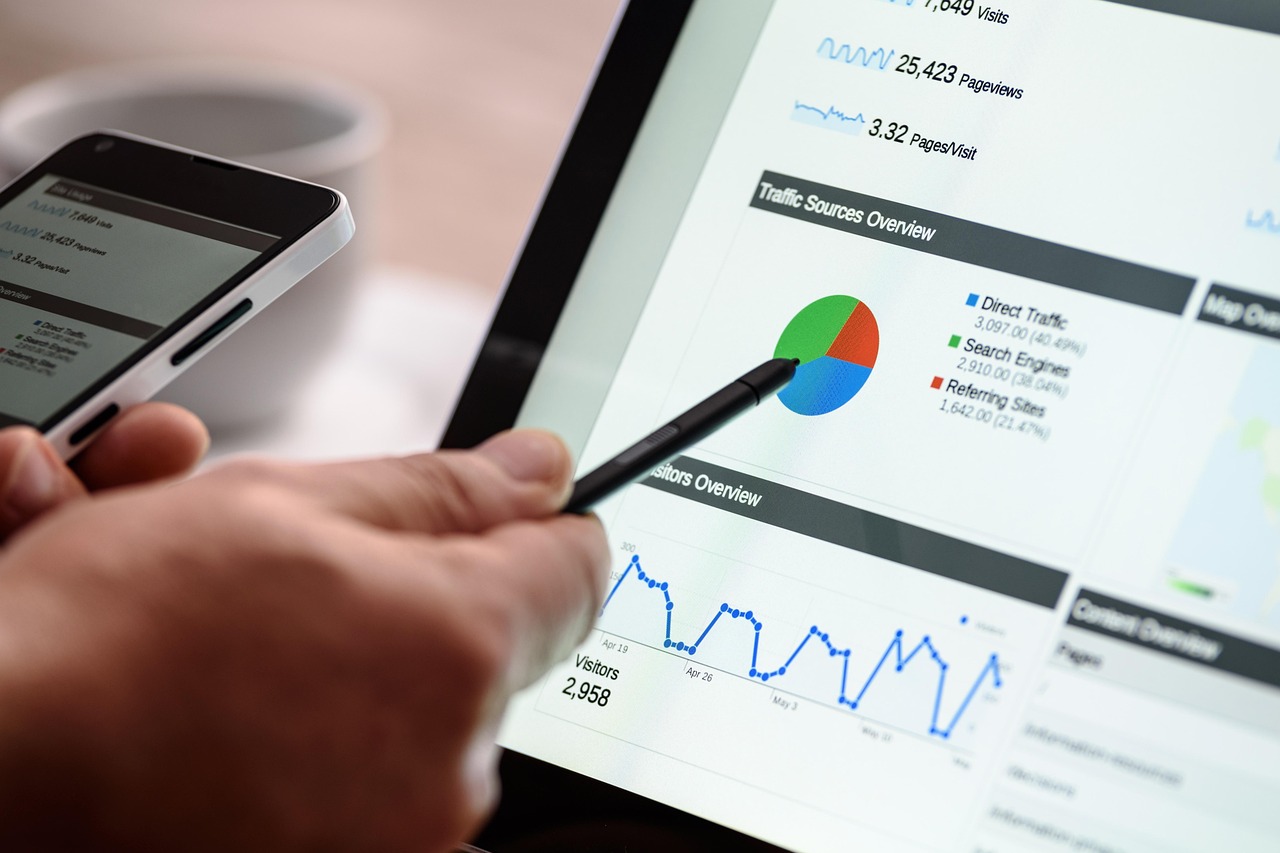

7 Advanced Strategies to Optimize Your PMAX Campaigns for Maximum ROI
7 Advanced Strategies to Optimize Your PMAX Campaigns for Maximum ROI
Performance Max (PMAX) campaigns have evolved quickly, offering digital marketers an unprecedented blend of automation and insight. But as with any Google technology, staying ahead requires more than a standard set-it-and-forget-it approach. If you want PMAX to become a true performance engine, you’ll need to embrace advanced strategies that go far beyond the basics. Let’s uncover how you can push your PMAX campaigns to deliver stronger CPM, CTR, and ROI than ever before.
1. Mastering Asset Group Controls to Boost Targeting & Creative Alignment
Recent PMAX updates give marketers deeper control over asset groups. An often overlooked lever for performance. Instead of lumping all your creatives into a generic asset group, aim to build tightly themed sets around specific customer intents or product categories.
By curating headlines, descriptions, images, and videos that speak directly to a segment, you nudge Google’s algorithms toward more precise matches. Segmenting by funnel stage or product collection? Each asset group should map directly to its target audience and desired outcome. This increased granularity makes relevance soar, fueling higher engagement that moves the performance needle.
New features also allow you to exclude certain audience or demographic segments at the asset group level. Want to prevent younger audiences from seeing luxury product ads, or ensure your promos only reach past purchasers? The latest controls let you pinpoint your ideal viewer. Down to advanced search themes and exclusion lists. Helping you keep spend laser-focused.
Experience tip: After creating themed asset groups for a large retailer, I saw PMAX begin surfacing my ads on far more relevant searches, which directly decreased wasted spend and boosted ROAS.
2. Use First-Party Data & Audience Signals for Relevance and Conversion
Think of first-party data and custom audience signals as the secret ingredient behind every high-performing PMAX campaign. Integrate your own CRM segments. Such as lapsed buyers, high-value customers, or recent website visitors. Into your audience signals.
When you supply Google’s AI with nuanced, high-quality signals, it accelerates learning and increases your chances of achieving conversion goals faster. Don’t stop with just remarketing lists. Layer in behaviors using website engagement, app activity, or upload customer match lists built from purchase histories.
Current best practice: refresh and refine audience signals regularly based on seasonal shifts, new product launches, or post-purchase behaviors. This ongoing optimization not only lifts CTR, it pushes your campaigns to maximize the value of each impression.
3. Smart Budget Allocation & Real-Time Bid Strategy Adjustments
Getting more from PMAX means making data-driven tweaks, not just blindly increasing budgets. Google’s machine learning is powerful, but it performs best when you regularly review campaign-level spending and reallocate toward high-return asset groups or product sets.
Set campaign budgets based on historic ROAS, daily conversion rates, and seasonality. Then keep a close eye on pacing. If an asset group is outperforming others, shift budget incrementally to capture every possible conversion without overexposure.
When it comes to bid strategies, options like ‘Maximize Conversion Value’ or ‘Target ROAS’ aren’t set-and-forget levers. Monitor real-time results and be nimble: lower your target CPA as data stabilizes, or pause asset groups dragging down performance. Smart marketers calibrate bid strategies using current conversion costs, not last month’s averages.
Expert insight: Consistently reviewing and reallocating budget among asset groups led to a 25% reduction in CPA for a national e-commerce brand within just six weeks.
4. Mitigate Waste with Campaign Exclusions & Structured Reporting
Wasteful ad spend is the nemesis of high-ROI campaigns. Fortunately, recent PMAX enhancements allow advertisers to exclude poor-performing placements and audience segments at both account and campaign levels. Use negative keyword lists to prevent irrelevant matches, and make use of new demographic and placement exclusions.
Leverage detailed PMAX and placement reports to identify where spend is being wasted. Whether it’s on apps, sites, or YouTube channels that never convert. Refine your exclusion lists continuously. Pair campaign exclusions with thorough reporting, and every dollar is far more likely to reach high-value prospects.
Documented example: After implementing exclusion lists and reviewing detailed reports weekly, a B2B client reduced non-converting placements by almost half, funneling budget toward higher-performing audiences.
5. Maximize Creative Impact via Google Ads Creative Diagnostics
In PMAX, creative assets play a more significant role than ever. Google’s recent creative diagnostics tools equip you to test, analyze, and optimize both video and image assets for maximum engagement.
Upload a diverse set. Multiple orientations and formats. For each asset group. Use the built-in strength diagnostics to spot underperforming combinations and swap them out fast. Horizontal and vertical video, in particular, should be tailored to platform requirements so Google’s automation can distribute your ads more efficiently. High-quality, relevant images boost ad strength and improve how your brand is perceived in every touchpoint.
Professional experience: Swapping out low-performing video assets for fresh content led to a noticeable climb in both CTR and time-on-site for a fashion retailer’s PMAX campaign in under a month.
6. Leverage Automation with a Watchful Eye
PMAX relies on Google’s automation, but great results don’t come from relying on automation alone. Schedule frequent reviews of insights and diagnostic tabs. Look for patterns. Like sudden drops in conversion value, spikes in low-quality traffic, or shifts in top-performing asset groups. And respond with manual interventions.
Use search term insights to discover what’s actually driving clicks and conversions. Often you’ll spot new keyword themes or excluded search terms worth acting upon. This detective work ensures your automation doesn’t go unchallenged and provides direction for both creative and budget reallocations.
Expert approach: Weekly manual review sessions, even brief ones, quickly surface trends that would have gone unnoticed. These action points have preserved ROAS during sudden traffic changes for enterprise clients.
7. Test, Measure, and Iterate Relentlessly
The PMAX landscape is far from static. Smart digital marketers run structured experiments. A/B testing different audience signals, creative formats, or asset group structures. Use asset-level reporting to compare new variants and refresh content often based on top performers.
Don’t hesitate to launch campaign experiments when new PMAX features roll out. Early adoption of beta controls, such as demographic exclusions or enhanced reporting, can give you a pivotal edge. Each test is a learning opportunity, stacking value as you fine-tune campaigns for maximum return.
Real-world outcome: Regular experimentation with video asset ratios and creative themes directly led to a 40% improvement in view rate for a SaaS provider. Lifting conversions at a lower CPM.
Wrapping Up: Turn PMAX Into Your Growth Powerhouse
There’s never been a better moment to push your PMAX campaigns beyond their base potential. The key is to combine Google’s advanced tools with systematic, hands-on optimization. Build targeted asset groups, activate your best audience signals, and let data. Not hunches. Drive your budget and bidding moves. Exclusion lists, creative diagnostics, and continuous testing are your secret weapons for keeping waste in check and results trending up.
Ready to see your campaigns outperform the competition? Embrace these advanced tactics and start maximizing your PMAX ROI from the very next optimization cycle. It’s time to lead, not just follow.
Frequently Asked Questions
How do asset group updates improve targeting in PMAX campaigns?
By allowing more refined segmentation of creative and audience signals, asset group controls help match the right message to each prospect. This ensures your budget is spent reaching people who actually care about specific products or offers, improving both click-through and conversion rates.
What types of first-party data work best for PMAX audience signals?
Customer lists from past purchases, lapsed buyer data, and site engagement histories are among the most valuable. Including details like purchase frequency or recency sharpens audience relevance. Make sure to refresh these data sets regularly to adapt to seasonality and new behaviors.
How can I stop PMAX campaigns from wasting budget on poor placements?
Use Google’s new placement exclusion and negative keyword tools. Regularly review placement and audience reports, and exclude domains, apps, or channels that generate clicks but not conversions. This step keeps your spend targeted toward actual prospects.
What’s the most effective approach to budget allocation in PMAX?
Start with historical results. Such as ROAS and conversion volume by asset group. And reallocate budget to top performers weekly. Real-time monitoring and adjustment, rather than setting-and-forgetting, yield far more consistent gains.
How often should I update creative assets for PMAX campaigns?
Creative fatigue sets in quickly. Review diagnostics weekly, and swap out ads or formats that show signs of declining performance. Fresh, relevant creatives keep your campaigns competitive and your message compelling.







